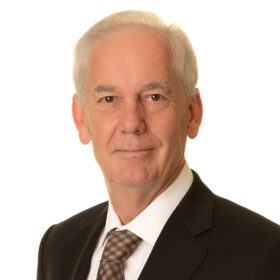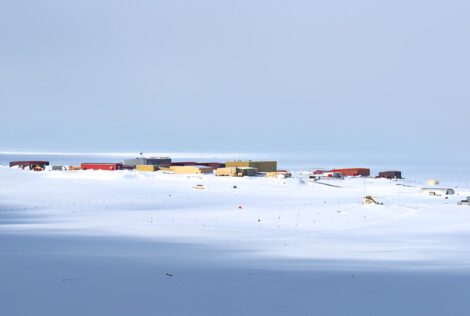
Expertise
Areas of Specialization
Research Clusters
Current status
-
Accepting graduate students
-
Professor
Engineering Physics
Overview
Currently Accepting Graduate Students
Research Interests:
The physics of nuclear reactor cores, in particular of graphite-moderated small modular reactors (SMRs):
Small modular reactors (SMRs) are seen world-wide as the future of civilian nuclear energy. Their modularity allows them to be prefabricated, deployed in a few pieces, and eventually, decommissioned by removing the core and other irradiated components as a whole. Their small size makes them suitable for use in remote areas, such as the Canadian Arctic, where electrical power is currently often provided by generators running on diesel fuel that needs to be flown in by plane.
A number of SMR designs are currently being proposed for the Canadian market; these all offer advanced, passive safety features and proliferation resistance. I am currently participating in the design of SMRs that use graphite as a moderator, and different types of fuel and coolant. In particular, I study the neutronic behaviours of the cores.
I am engaging in the revival of fusion energy research in Canada, leveraging my expertise in computing tools for fission reactors for studying and designing tritium breeding blankets of fusion reactors. I teach a course in fusion energy and plasma physics.
Development of analysis tools for research in reactor physics:
On the more fundamental side, I work on the development of a Monte Carlo code for nuclear reactors that is based on the GEANT4 code, used in particle physics. The unique feature of this code (G4STORK) is its ability to follow neutron distributions in true time, as opposed to the traditional codes, which analyze the neutron distribution (quasi)-statically, from one generation to the next. This code allows for a proper treatment of delayed neutrons (and photons), and provides a much more accurate description of systems that are far off-critical (such as accelerator-driven power systems or subcritical prototypes.).
Research connected to the McMaster Nuclear Reactor (MNR):
A PhD student in my group is instrumental in reconstructing the burnup history of the McMaster Nuclear Reactor; the goal of this research is to establish the current isotopic content of the fuel, the neutron and photon fields in the reactor, and -as a result- optimal locations for the production of medical radio-isotopes in the core. This study involves measurements of the neutron and photon fields in the core.
A research collaboration is being developed with Canadian Nuclear Laboratories, that will investigate the possibility to monitor a small nuclear reactor by detecting the neutron flux outside the core. This research is of interest in the context of nuclear safeguards for Small Modular Reactors.
Did you know?
Dr. Buijs is Fellow and Past President of the Canadian Nuclear Society
Dr. Buijs was with Atomic Energy of Canada Limited from 2001 to 2008, first as senior scientist in safety and licensing in the Reactor Core Physics division, then as section head for neutronic overpower protection in CANDU reactors.
In 2006 he became manager of the Physics Design group for the ACR-1000. In 2009 Dr. Buijs was appointed as professor in the Engineering Physics Department of McMaster University in Hamilton. He has served as associate chair in the department and has acted as chair.
Dr. Buijs has a Master’s degree in experimental physics from the State University in Utrecht. He received a PhD from the same University on research on photon-photon collisions performed at the Stanford Linear Accelerator Center in California, USA. Prior to joining AECL, he was Fellow and staff member at CERN, the European Centre for Particle Physics from 1986 to 1994. From 1994 to 2001 he was full professor of experimental physics at Utrecht University and director of the particle physics department.
M.A.Sc. and Ph.D. from Utrecht University.
Successfully managed the physics design of the Advanced CANDU Reactor (ACR-1000). This reactor was intended to be the successor to the existing CANDU-type reactors.
The first observation of the formation of a spin-one meson (the iota) in photon-photon collisions. This obviously requires one of the photons to be far off mass-shell.
- M. Alqahtani, A. Buijs and S. Day, “Experimental measurement and Monte Carlo code simulation of the gamma heating at different irradiation sites in a nuclear research reactor”, Nuclear Engineering and Design 364 (2020) 110690.
- J. Sharpe, A. Buijs, “Practical Environment-Corrected Discontinuity Factors and Homogenized Parameters for Improved PT-SCWR Diffusion Solutions”, Annals of Nuclear Energy 111 (2018) 101-117.
- J. Sharpe, A. Buijs, J. Pencer, “Methodology to Design Simulated Irradiated Fuel by Maximizing Integral Indices (c_k,E,G)”, Journal of Nuclear Radiation Science, Vol. 2(2) (2016) 021017-7.
- J. Sharpe, J. Atfield, J. Chow, L. Yaraskavitch, A. Buijs, “Sensitivity Analysis of ZED-2 Experiments Using (Pu,Th)O2 Fuel Bundles to Assess Their Applicability to the SCWR Conceptual Design “, CNL Nuclear Review, 5(2) (2016) 299-308
- R. Ibrahim, A. Buijs, “A Preliminary Concept for the Initial Core of the SCWR”, Proceedings 2014 Canada-China Conference on Advanced Reactor Development (CCCARD-2014) Niagara Falls Marriott Fallsview Hotel & Spa, Niagara Falls, Ontario Canada, April 27-30, 2014.
- L. Russell, A. Buijs, G. Jonkmans, “G4-STORK: A Monte Carlo Reactor Kinetics Simulation Code”, Nuclear Science and Engineering 176(3) (2014) 370-375.
- R. Ibrahim, A. Buijs, J. Luxat,
“Assessment of the material attractiveness and reactivity feedback coefficients of various fuel cycles for the Canadian concept of Super-Critical Water Reactors”,
Nuclear Engineering and Technology, 7 (2022) 2660–2669. - Elliott J.T. Berg, A. Buijs,
“Evaluation framework for molten salt reactors and other new nuclear power reactor systems”,
Nuclear Engineering and Design, 429 (2024), 113588. - M. Alqahtani, A. Buijs, S. Day,
“Experimental measurement and Monte Carlo code simulation of the gamma heating at different irradiation sites in a nuclear research reactor”,
Nuclear Engineering and Design, 364 (2020) 110690. - J. Sharpe, A. Buijs,
“Practical Environment-Corrected Discontinuity Factors and Homogenized Parameters for Improved PT-SCWR Diffusion Solutions”,
Annals of Nuclear Energy, 111 (2018) 101–117. - J. Sharpe, A. Buijs, J. Pencer,
“Methodology to Design Simulated Irradiated Fuel by Maximizing Integral Indices (c_k,E,G)”,
Journal of Nuclear Radiation Science, 2(2) (2016) 021017-7.







